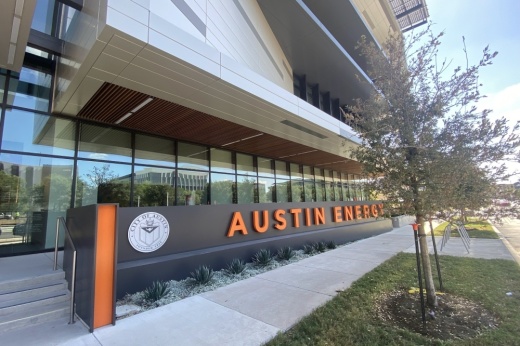City Council approved an increase to Austin Energy's base rates Dec. 8 that will increase bills for the utility's customers beginning next year.
The base rate hike came almost two months after city officials signed off on a separate increase to the utility's charges. That added more than $15 to the monthly bill of typical residents—defined by AE as those using 860 kilowatt-hours per month—while the new base rate will mean an additional $9 monthly cost starting in March 2023.
Combined, both increases will total a nearly $290 annual increase for the typical resident's electric costs once they are in effect.
“We know any rate increase affects our customers, who are dealing with rising costs just like our utility,” AE General Manager Jackie Sargent said in a statement. “With the new base rates, residential customers will continue to see some of the lowest bills in the state while paying closer to the cost of service. I appreciate City Council recognizing the need to protect customers from rate shock while improving the utility’s financial position to continue to meet our community’s needs and priorities in the long term. We believe this balanced approach will help our customers and our utility’s long-term financial health.”
Base rate review
The city-owned power utility updates its base rates, or its charges to customers that bring in revenue to cover operational costs, every five years. AE's last rate adjustment ended up lowering power costs in the utility's service area, meaning the latest change will be its first hike in a decade.
AE currently charges customers based on five tiers of power usage in a system that sees rates increase as more electricity is used. The new base rate system cuts the number of tiers to four—AE originally proposed three—and adjusts the rates for those tiers.Another component of the base rate is a flat monthly customer charge applied to all users. The current customer charge is $10 per month, a figure that will increase to $13 alongside the new base rates next year. Council's approved rate plan will see that charge rise to $14 the following year and $15 the year after that.
The plan covering the new tier structure, rates and phased customer charges stemmed from extensive work on the issue through this year by council, AE, community advocates and other participants in the complex rate case.
The new power charges were approved on the heels of a separate AE increase adding about $15 to the average resident's monthly bill over the next three years. That change to pass-through charges resulted from factors largely outside AE's control, the utility had said, such as global energy price spikes and updates at the Electric Reliability Council of Texas, the state power grid manager.
Behind the vote
Discussions over the base rate hike drew concerns along the way over the "rate shock" that customers across town will experience with the back-to-back increases, and how city leaders would decide to balance those worries against a need to support the power utility with the revenue it needs to operate.
While AE had proposed its own rate system through the year, council—responsible for monitoring the utility and setting its rates—ended up taking their own course based on a framework from District 7 Council Member Leslie Pool.
The Pool proposal passed in a 7-4 vote, with council members Vanessa Fuentes, Kathie Tovo, Alison Alter and Ann Kitchen against. Fuentes, a critic of the rate case and its future effects on lower-income Austinites, said the approved option did not address her concerns.
“Knowing how challenging it is to live in our ever-increasingly more unaffordable Austin with rents on the rise, with inflation, with grocery prices going up, all of those factors are compounding and making it more challenging for our working families," Fuentes said. "That to me is what is top of mind, it is why I don’t think that this proposal is the best possible solution for Austinites.”
Tovo said her opposition grew as the final rate structure did not account for several suggestions from community members she said may have further limited the upcoming rate shock. Alter said late revisions to the proposal did not leave her with enough time to ensure it sets up AE as needed.
“We know that this process is complex. It weaves together various and sometimes competing priorities: conservation, energy efficiency, equity, state politics and climate crisis mitigation. Tonight at this point, I cannot vote to inflict these increased rates on our community if I don’t have full assurances that it will fully fix our utility’s financial challenges," she said.
The remaining council members voting in favor said they believed the outline represents an upgrade over the utility's original proposal. District 8 Council member Paige Ellis pointed to the new tiered rate structure as one that could help to incentivize power conservation, especially among higher users.
District 3 Council Member Pio Renteria said he moved ahead with the "hard decision" to vote in favor as it sets up the power utility's operations. He also encouraged lower-income residents concerned about their power bills to contact his office for help enrolling in AE's Customer Assistance Program offering reduced rates for eligible customers.
“This is in the long run going to be better for the city and for the ratepayers, and I believe that. I’m going to be out there paying the bills myself when I leave this council, and I’ll be in your condition when I leave here," Renteria said.





